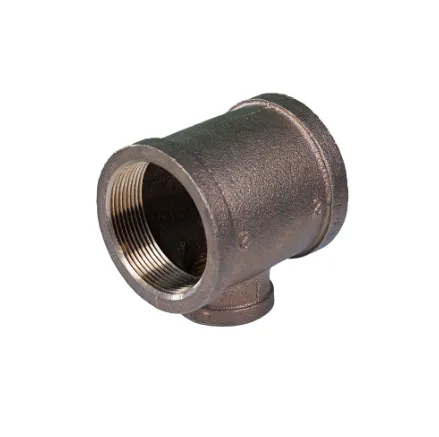Selecting the right 2 inch steel pipe fittings involves more than just matching the size; it’s a decision that impacts the efficiency, safety, and longevity of your piping system. From industrial applications to residential plumbing, 2 inch steel pipe fittings play a crucial role in connecting, changing, aligning, and terminating flows in pipes. A deep understanding of the types, materials, and applications of these fittings not only ensures optimal performance but also extends the lifespan of your piping infrastructure.

1.
Types of 2 Inch Steel Pipe Fittings
Steel pipe fittings come in various designs, each serving a different purpose. The most common types include elbows, tees, reducers, caps, and couplings. Elbows are used to change the direction of flow, while tees allow for branch connections. Reducers are essential for connecting pipes of different diameters, ensuring smooth flow transitions. By understanding these varied functions, industry professionals can make informed choices that align with their project requirements.
2. Material Considerations
Not all steel is created equal. Two-inch fittings can be made from various grades of steel, including carbon steel, stainless steel, and alloy steel. Carbon steel fittings offer strength and are ideal for industrial applications where temperature and pressure limits are a concern. Stainless steel fittings, renowned for their corrosion resistance, are particularly useful in environments susceptible to corrosion and for transporting potable water. Evaluating the environment and the nature of the fluids being transported is vital for selecting the appropriate material.

3. Standardization and Quality Assurance
Adhering to industry standards is non-negotiable when it comes to selecting steel pipe fittings. Standards such as ASTM, ANSI, and ASME provide guidelines that ensure quality and compatibility. Ensuring that your chosen fittings are certified by these standards not only validates their quality but also helps in maintaining a seamless operation. Additionally, relying on reputable manufacturers for your fittings can significantly boost your system’s reliability.
2 inch steel pipe fittings
4. Installation and Maintenance
Proper installation of 2 inch steel pipe fittings is crucial to their performance and durability. Incorrect installation could lead to leaks or even system failures. Using the right tools and following installation guidelines precisely assures a secure fit. Post-installation, a regular maintenance schedule will prevent corrosion and wear, ensuring the fittings continue to perform efficiently over time. Inspections should focus on tightness, signs of wear and tear, and the integrity of the material.
5. Innovations and Technology in Pipe Fittings
The landscape of steel pipe fittings is evolving, with technological advancements leading to improved performance and efficiency. Innovations like precision engineering, better sealing technologies, and lightweight materials are making installations quicker and reducing labor costs. Staying abreast of these innovations allows for optimized performance and cost efficiency.
6. Economic Considerations
While initial cost can be a consideration, it’s important to approach 2 inch steel pipe fittings as an investment in your overall system. The long-term benefits of using high-quality, standard-compliant fittings far outweigh the initial costs by reducing the need for frequent replacements and minimizing the risk of failures.
Choosing the right 2 inch steel pipe fittings requires a balance between understanding their functional needs, environmental conditions, and compliance with global standards. Whether in a large industrial setup or a complex domestic plumbing system, making informed decisions plays a pivotal role in ensuring safety, efficiency, and longevity. These insights draw from years of industry experience and are supported by a wealth of expert resources, providing a trusted foundation for all your piping infrastructure needs.
Post time:
Jan-26-2025











